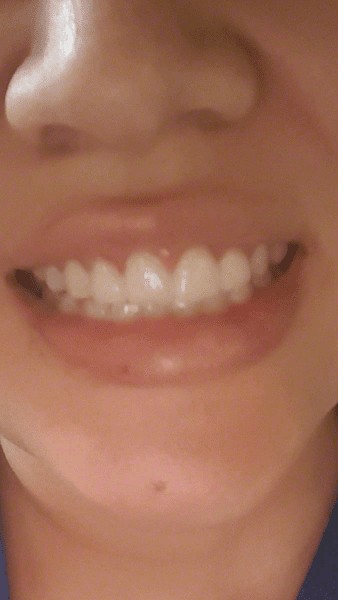
Dental crowns, protective caps for damaged or decayed teeth, are designed to be robust, but they can exhibit some movement in certain situations. Crowns are usually cemented securely onto natural teeth or implants, ensuring stability. However, factors like wear and tear, teeth grinding, or an ill-fitting crown can contribute to shifting. It’s not a common occurrence, as dental professionals take great care to ensure a snug fit. While there is a slight possibility of shifting, it’s not a major concern. Regular dental check-ups and proper oral hygiene are essential for maintaining crown longevity. If a crown does shift, prompt dental attention can address the issue, potentially requiring re-cementing or replacement.

Can Dental Crowns Shift?
Dental crowns are a common dental restoration used to protect and strengthen damaged teeth. They are designed to fit snugly over the existing tooth, providing a natural-looking and durable solution. However, some patients may wonder if dental crowns can shift over time. In this article, we will explore this question and provide valuable information about the stability of dental crowns.
1. The Stability of Dental Crowns
- Dental crowns are custom-made to fit a specific tooth, ensuring stability.
- Dental cement is used to bond the crown to the tooth, further enhancing stability.
- Properly placed dental crowns are designed for long-lasting support.
2. Causes of Dental Crown Shifting
- Inadequate cementation during initial crown placement can cause shifting.
- Poor oral hygiene, leading to gum disease and bone loss, can weaken the tooth’s support structure.
- Teeth grinding or clenching (bruxism) can apply excessive pressure to the crown.
- Biting into hard or sticky foods can stress the crown and increase the risk of shifting.
3. Preventing Dental Crown Shifting
- Maintain good oral hygiene with regular brushing, flossing, and dental check-ups.
- Use a nightguard if you have bruxism to protect the crown from grinding or clenching.
- Be cautious with food choices, avoiding hard or sticky items that can dislodge the crown.
- Contact the dentist if you notice changes in crown fit or stability to prevent complications.
4. Benefits of Dental Crowns
- Dental crowns offer protection and support for weakened or damaged teeth.
- They restore tooth functionality for comfortable biting and chewing.
- Crowns are aesthetically pleasing, matching the color, shape, and size of natural teeth.
- They enhance the overall appearance of the teeth, boosting confidence and self-esteem.
- Dental crowns are highly durable and can last for many years, providing a long-term solution for tooth restoration.
Conclusion
In summary, while dental crowns are designed to be stable and long-lasting, they can potentially shift or become loose over time. Factors such as inadequate cementation, poor oral hygiene, teeth grinding, and biting into hard or sticky foods can contribute to crown shifting. However, by practicing good oral hygiene, wearing a nightguard if necessary, and being mindful of the foods you eat, you can minimize the risk and ensure the stability of your dental crown. If you have any concerns about the fit or stability of your crown, it is important to consult your dentist for proper evaluation and treatment.
Key Takeaways: Can Dental Crowns Shift?
- Dental crowns can sometimes shift due to various factors.
- Shifting can occur if the crown is not properly fitted or if there is tooth decay underneath.
- Poor oral hygiene and tooth grinding can also contribute to crown shifting.
- If you notice any discomfort or changes in the fit of your crown, consult your dentist.
- Regular dental check-ups are essential to monitor the condition of your dental crowns.
Frequently Asked Questions
Dental crowns are a common dental procedure that many people undergo to restore the appearance and functionality of their teeth. One concern that patients often have is whether dental crowns can shift over time. In this article, we will address this question and provide you with all the information you need to know about dental crowns and their stability.
1. Can dental crowns shift?
Dental crowns, while designed for stability, can shift due to factors like improper fit or inadequate bonding. An ill-fitted crown, often caused by size discrepancies or insufficient cement during bonding, may become loose and shift over time. Although crown shifting is relatively rare, it is essential to ensure a proper fit to prevent this issue.
2. What are the signs of a shifting dental crown?
A shifted dental crown can manifest as heightened tooth sensitivity, discomfort, altered bite sensation, or chewing difficulties. Sometimes, it may even be visible or palpable. If you suspect such a shift, prompt dental evaluation is crucial. Your dentist will assess the situation and recommend the necessary corrective measures.
3. What causes dental crowns to shift?
Dental crown shifting can result from various factors, including poor oral hygiene, which allows bacteria to weaken the tooth structure. Trauma, teeth grinding, and wear and tear are additional causes. Following proper oral hygiene and dentist-recommended care can reduce the risk of crown shifting, ensuring the crown’s stability and longevity.
4. How can I prevent dental crowns from shifting?
Preventing dental crown shifting requires good oral hygiene practises, including regular brushing, flossing, and dental check-ups. A healthy diet and avoiding teeth-grinding are also essential. For individuals involved in high-risk activities like contact sports, wearing a mouthguard is crucial to protecting dental crowns and maintaining their stability.
5. What should I do if my dental crown has shifted?
If you suspect your dental crown has shifted, prompt contact with your dentist is crucial. Ignoring a shifting crown can lead to complications. The dentist can assess the issue and may need to reposition or replace the crown, ensuring its stability and long-term function. Don’t delay seeking professional evaluation and care.
How Can a Dental Crown Leak ?
Final Summary: Can Dental Crowns Shift?
Dental crowns, although designed for durability, can shift over time due to various factors like natural tooth movement, improper fit, or changes in underlying tooth structure. It’s crucial for individuals with dental crowns to acknowledge this possibility and take precautions for oral health maintenance. Regular dental check-ups, proper oral hygiene practices, and the avoidance of habits like grinding teeth are essential to prevent shifting and identify issues early. While dental crowns can shift, being proactive in oral care minimizes complications. Informed individuals who care for their dental crowns can enjoy the long-term benefits of these restorations with confidence.
Call or Book appointment online
:Ace Dental Care Alpharetta office: 678-562-1555 - Book Now
Ace Dental Care Norcross office: 770-806-1255 - Book Now
Disclaimer
This blog post was generated by artificial intelligence. The content of this post may not be accurate or complete, and should not be relied upon as a substitute for professional advice. If you have any questions about the content of this post, please contact us.
We are constantly working to improve the accuracy and quality of our AI-generated content. However, there may still be errors or inaccuracies. We apologize for any inconvenience this may cause.





